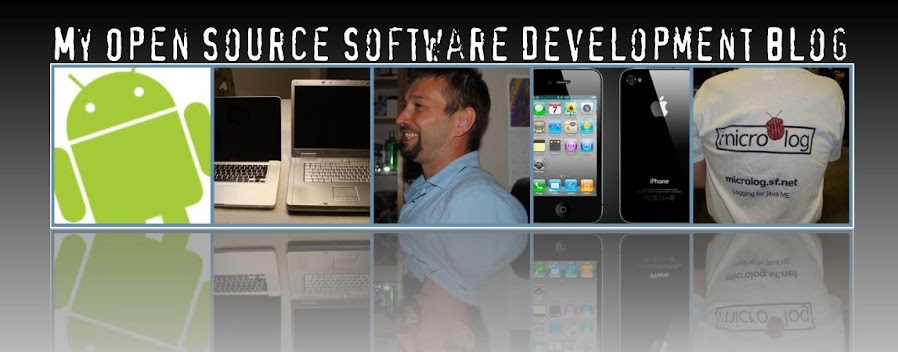I have started the work on Microlog V3.0. To start with I have been able to make the structure a little bit easier. For example I have removed some abstract classes, like the
AbstractFileAppender. This was created for one purpose only, to be able to re-use parts of the file logging functionality between Microlog and M4A. A nice side effect of this construction is that we save some memory, both in terms of the memory footprint and run-time memory. Some bugs are fixed and there are some minor improvements.Even though Microlog is my long time sweetheart, the most exciting things are happening within the M4A project. When moving the code from the Microlog to M4A, we skipped a lot of code. It was the core and only a few appenders that was moved. Working with the Android platform is quite different and the needs are a little bit different. For example, there is not really a need to log to the console. Instead we have replaced the
ConsoleAppender with the LogCatAppender. This works as the built in log classes. The reason for moving Microlog to the Android platform was to give Android developers more opportunities than the built in logging facilities. It is possible to use the logcat tool to log to file, but in that case you do not get the normal logcat logging in Eclipse. I have never heard of any way of logging to a file on the SD card or on the device, using the Android logging classes. With M4A it is possible to log to a file on the SD card. Just use the modified FileAppender to use M4A to log to file. Another unique feature in Microlog is the ability to log to a remote server. This far we have the
HTTPAppender which logs to a HTTP server. This is definitely something that is not possible with the standard Android logging facility. The HTTP logging is ideal for field test or similar, where the developers need to collect logs in a central place. No need to transfer log file manually. Note that during the development it might be more natural for individual developers to log to a file.But that is not all! The most prominent addition is the SLF4J implementation. This gives you as a developer freedom to change the logging implementation whenever you feel like it. For example you want to use M4A during development for file logging, but want to remove the logging at deployment time. Just replace the M4A jar with the NOP implementation. If you want to revert back to good old Android LogCat logging (only), use the SLF4J implementation.
Last but not least, we have changed the
PropertyConfigurator to read configuration files from an Android resource directory. The microlog.properties file could either be stored in the /res/raw or the /assets directory.For those of you that want to try it out, it is available for download at: http://code.google.com/p/microlog4android/downloads/list
Please note that the latest release (V0.5) is rather experimental, but please try it out and give us feedback.
